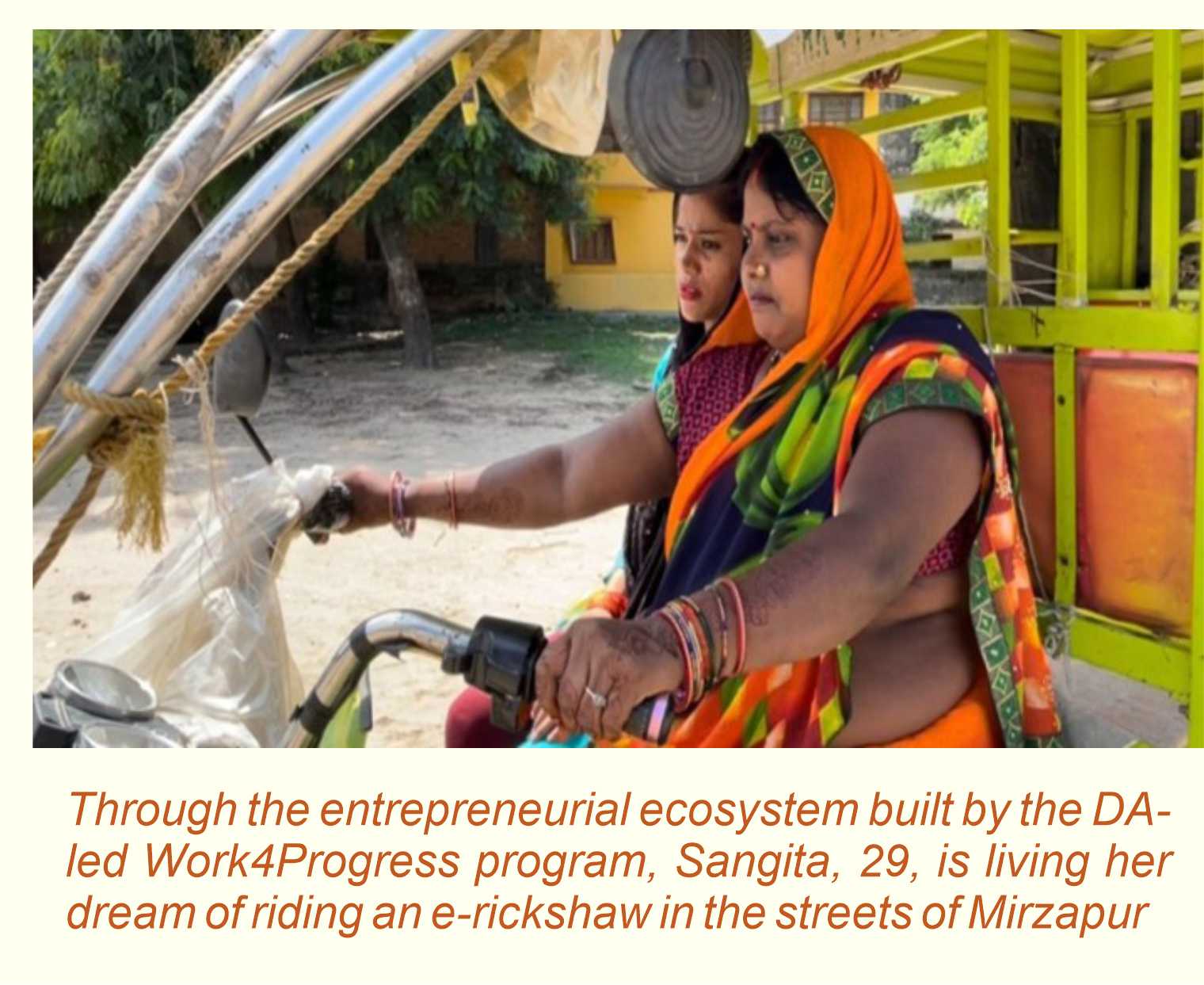|

In 2019, just before the world got hit by the global pandemic COVID-19, India announced its ambition to become a $5 trillion economy and global powerhouse by 2024-25 (PTI 2022). At the COP26 meet in Glasgow, India set a seemingly conflicting target to cut its net carbon emissions to zero by 2070 (BBC 2021). While we may seem to be on our way to becoming a $3 trillion economy already, challenges such as poverty and joblessness still prevail in the country, with more than 32 million individuals unemployed (CMIE n.d.) and 84 million stuck in poverty (Natti 2020). Constructing a ‘green economy’ has become the shared vision of development that can help achieve this economic progress within the ecological limits. And, India’s movement towards a green economy with an inclusion lens can result in improved human well-being and social equity while significantly reducing environmental risks. Experts, including neo-classical economists, have been trying to predict when this would be possible and project various scenarios. India Inc also seems to be taking the lead in tackling these two dominant dualities under the ‘framework’ of a capitalist-based economy that needs continuous economic growth – without contextualising it in its reality. An archaic system got us in trouble in the first place, where subsidies are deemed incentives for large businesses, while the poor are seen as ‘liabilities’ who need to be subsidised. Examples include an attempt by a multinational to reduce its waste and carbon footprint while encouraging the consumption of a mineral water bottle product in rural communities located 1500 km away from its unit. Moreover, 90% of India’s labour force is employed in the informal economy (Das 2021). With its ability to innovate within the ecological limit, be inclusive, generate livelihood opportunities, and quickly respond to risks, micro-entrepreneurship is a phenomenon, positioned in informality, which can enable such an envisioned change.
The green economy can be efficiently, effectively, and relevantly achieved through the strengthening of micro-enterprises in a systemic manner. It will, however, call for - (i) enabling equitable distribution of resources, especially finance and compensation for those who are most at risk; (ii) changing the power structures that exist in knowledge by accepting what we do not know and learning from those whose identities are entrenched in responding to economic growth with climate solutions and; (iii) facilitating access to opportunities that are future forward and cater to ‘aspirations’ of entrepreneurs and communities. It is undeniable that the pandemic has shaken systems, but it has also exposed the fault lines to give us an excellent opportunity to build a multi-hued economy, where we can witness the culture and demand of environmentally conscious-cum-small businesses, thriving to create a regenerative future. Ultimately, not just shades of green, the economy will then represent hopes and aspirations in the form of reds, blues, and yellows as well. As we celebrate 75 years of independence, let us make a vow for millions to be free from the shackles of poverty, suppressive ‘structures’ that inhibit many from employing or showcasing a unique identity, and finally, the worn-out ‘notions of development’ that stand in the way of creating a pathway for prosperity for our people and planet. References BBC. 2021. COP26: India PM Narendra Modi Pledges Net Zero by 2070. BBC, 2 November, 2021. Details available at https://www.bbc.com/news/world-asia-india-59125143, last accessed on 10 August, 2022 CMIE (Centre for Monitoring Indian Economy). n.d. Unemployment rate in India. Details available at https://unemploymentinindia.cmie.com/, last accessed on 10 August, 2022 Das, S. M. 2021. ‘The informal economy gives us sustainability. We should strengthen the lives of its workers’: Bishwapriya Sanyal. Times Evoke, 9 October, 2021. Details available at https://timesofindia.indiatimes.com/times-evoke/photo/86881940.cms, last accessed on 10 August, 2022 Natti, S. 2020. Only 8.4 crore poor in India, claims a new study. The New Indian Expresss, 18 February 2020. Details available at https://www.newindianexpress.com/business/2020/feb/18/only-84-crore-poor-in-india-claims-a-new-study---2105127.html, last accessed on 11 August, 2022 PTI. 2022. India would become $5-trillion economy by 2026-27: Anantha Nageswaran. The Economic Times, 14 June, 2022. Details available at https://economictimes.indiatimes.com/news/economy/indicators/india-would-become-5-trillion-economy-by-2026-27-cea-v-anantha-nageswaran/articleshow/92205688.cms, last accessed on 10 August, 2022
Kanika Verma |
 Juxtapose the aforementioned bottled water example with a local e-rickshaw business run by a young, specially-abled woman, known as Sangita. Her physical challenge was overcome through redesigned hand brakes to ease her riding, by another local entrepreneur who recreates battery-powered rickshaws from scrap. This narrative is not a dream or work of future fiction, but Sangita’s beautiful journey of courage that has sparked a ‘movement’ of
Juxtapose the aforementioned bottled water example with a local e-rickshaw business run by a young, specially-abled woman, known as Sangita. Her physical challenge was overcome through redesigned hand brakes to ease her riding, by another local entrepreneur who recreates battery-powered rickshaws from scrap. This narrative is not a dream or work of future fiction, but Sangita’s beautiful journey of courage that has sparked a ‘movement’ of